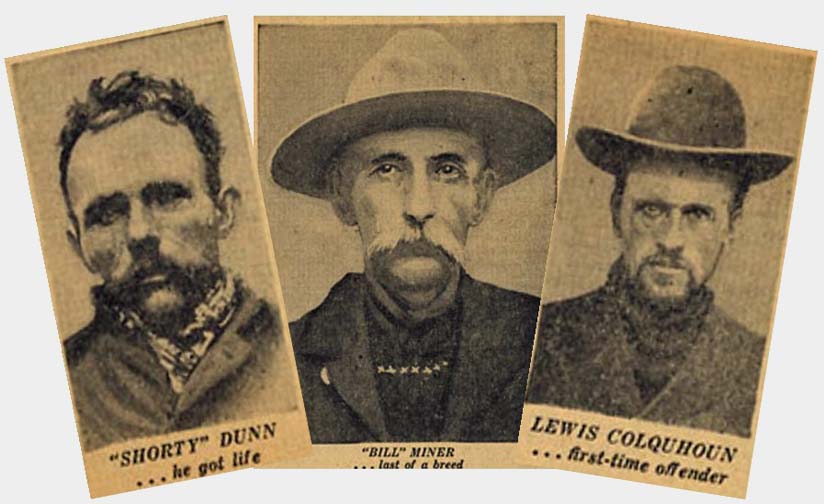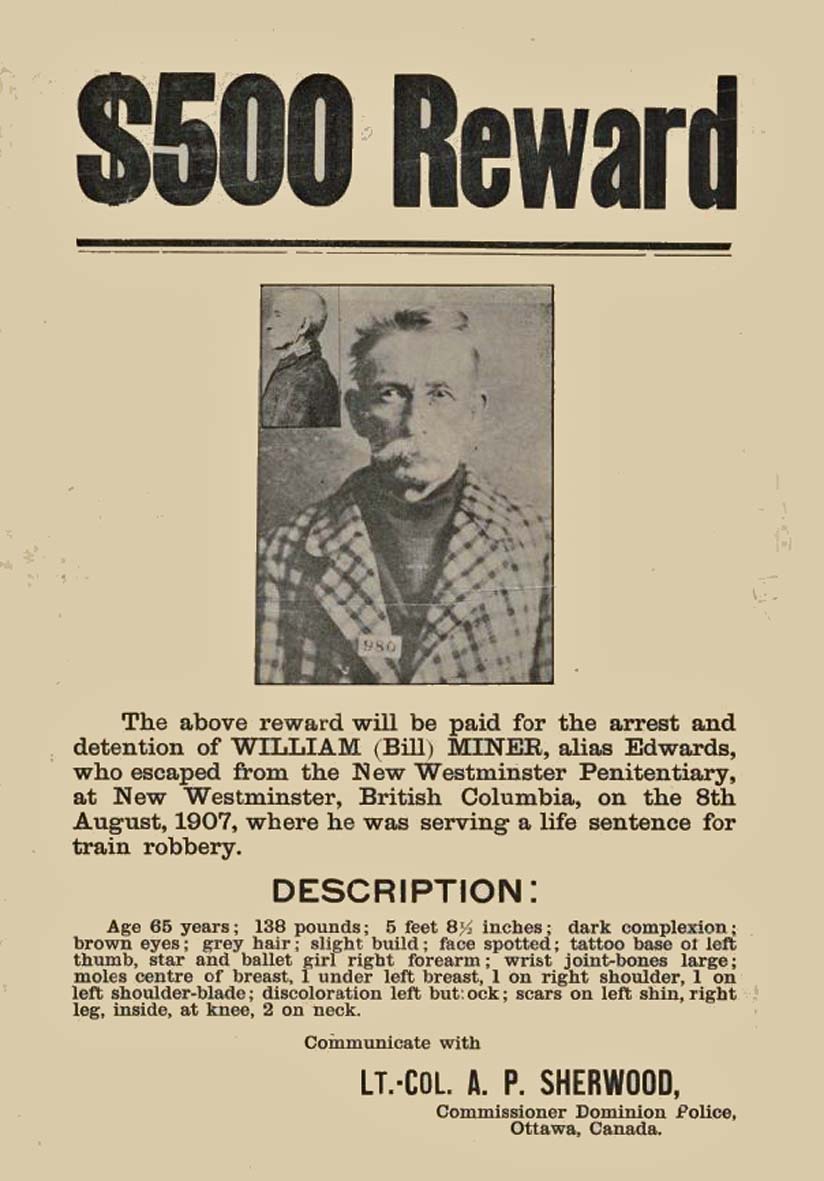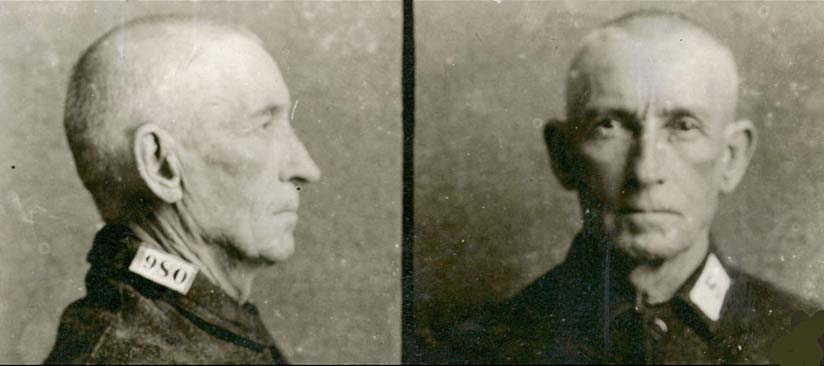

North America - Get your espresso ready, pour a shot of brandy into it, and settle in for the not so great Canadian mail train
robbery.
Mail trains were tempting targets because they carried substantial amounts of gold, money, and registered mail with valuable goods.
This is the story of one of the last train heists in Canada and what the thieves didn't get away with.
Canadian Mail Train Robbery Begins
At 23:30, 8 May 1906, three armed men waited on the tracks near Duck's Station, British Columbia.
Their target was Canadian Pacific Railway (CP) mail train number 97 and the 35,000 dollars in gold it carried.
You'll be forgiven if you've never heard of Duck's Station.
It doesn't even appear in the 1924 CP stations reference books, that's how small it was.
It was originally named for the Post Master who settled the area, Jacob Ducks.
At one point the post office was called "Duck and Pringles".
I'm including that tidbit because, well, for no reason other than it amuses me.
At one point the name was changed to Monte Creek, a name still in use.
It's an idyllic, rural area known for vineyards now.
But in 1906, it was an out of the way stop, 44 kilometres south east of Kamloops.
A Perfect Place for a Hold Up
The leader of the trio was serial train robber American Bill Miner, aka the Grey Fox.
Bill Miner drifted up from the US after being released from prison in 1901.
He had a long history of hold ups and train robberies and continued his ways when he arrived in Canada.
Number 97 stopped on the tracks and Bill Miner, Thomas "Shorty" Dunn (aka John William Grell), and Lewis "Scottie" Colquhoun forced the
train's crew to un-couple the express car and drive the train and mail car a mile down the tracks.
Once they were at a safe distance, Miner, Dunn, and Colqohoum told the crew to force the mail car doors open.
Inside, mail clerks A.L. McQuarrie and W.M. Willis heard the noise and opened the doors.
The bandits leapt aboard and started rummaged through the mail bags looking for the gold.
When none was found, Miner turned on the clerks, demanding to know where it was.
McQuarrie was said to have looked at Miner with a grin and say, "It's in the express car".
Yes, the very same car now a mile down the tracks.
Miner and his gang missed their opportunity.
In a cruel bit of fate, they somehow missed $40,000 in cash in one of the mail bags.
What did they get away with?
Reports vary.
A few newspapers claim they got $100 dollars.
In a 24 Feb 1982 newsletter about the robbery, CP confirmed the amount was $15.50.
Oh, and a bottle of liver pills.
This was a disaster.
With no time to go back for the express car, the three men cut their loses and rode off.
There was a hell of a hue and cry across the country about this robbery.
It was so notorious, it even made page one of the New York Times with the following headline "Train Robbers Rifle Mail Car on Canadian Pacific
Railroad;".
The post office offered up to $15,000 for the trio's capture.
No stone was left unturned in what would become the biggest fugitive hunt in British Columbia's history.
Northwest Mounted Police, specially appointed constables, indigenous trackers, blood hounds, provincial police, and American police (watching the border), all
worked to hunt the bandits down.
Look Out Boys, It's All Off!
Miner and his accomplices made it all the way to Douglas Lake, about 138 kilometres (85 miles) north east of Kamloops.
Miner and Colqohoun surrendered peacefully on 14 May 1906 when they were caught.
Dunn, well, he decided his best chances involved a shoot out.
He pulled his guns and began taking shots at the police and was promptly rewarded with a bullet in the leg.
Shorty Dunn, said, "Look out boys, it's all off!, opened fire and bolted. I ran around the clump of willows after Dunn. Just as I fired at him, he
swung and fired at me. I thought I had missed him so I fired again. At this moment he plunged headlong into a small creek. Stewart came up then and Dunn put up
his hands while sitting in the water, a .45 in one hand and a Luger in the other. Just at this moment I heard a whoop and a splash to my left. I ducked behind
a clump of bushes and covered a figure through them with my gun, thinking another one was loose. I was just about to fire when I noticed an arm and hand
holding a revolver which fortunately I recognized as one of our service Colts. It was Shoebothom, who had stumbled into the creek, letting out a whoop as he
fell." - Constable J.T. Browning's 1953 account of the Miner gang arrest CP Rail News Volume 12 Number 3 - 24 Feb 1982.
Not exactly a Hollywood scripted finale.
Miner confessed to the robbery, telling the officers he thought the train was also carrying $100,000 in money destined for the San Francisco earthquake relief
fund.
Miner didn't seem to have any luck when it came to train 97, the relief fund had been shipped a day earlier.
The three stood trial together in Kamloops and were all convicted of various charges and sent to the New Westminster Penitentiary.
Shorty Dunn was sentenced to life but paroled in 1918.
He remained in the Kamloops area and seemed to stay out of trouble, until his death in 1927.
Lewis Colqohoun, sentenced to 25 years, died 1911 in prison from TB.
The Grey Fox Escapes
But what of the Grey Fox himself?
The moment the prison doors slammed shut, Miner was plotting his escape.
He was a wily customer and had no intentions of sitting out a life sentence.
This next part of the story may be apocryphal, it's difficult to say.
According to some sources he managed to convince prison authorities to allow him to receive religious books from outside sources.
Because he was so well behaved and easy going, it never dawned on those in charge he was preparing for an escape, so the books weren't searched.
Inside those good books was money, lots of money.
Given what was uncovered in later reports on Miner's escape, there may be some truth to the tales of money smuggled into him.

Sentenced 21 May 1906 Miner escaped on 8 Aug 1907.
He slipped away from the prison with 3 others while on a work detail within the prison grounds.
Archives Canada holds a series of interesting letters between New Westminster Penitentiary personal and Ottawa regarding the escape.
The letters back and forth makes it clear that a series of terrible decisions were made leading up to Miner's relatively easy escape, including allowing a hole
to be dug from outside the fence that was left unfilled and not having enough guards to oversee work crews.
Inspectors of Penitentiaries recorded a number of lax habits by the staff, which included regularly leaving an entrance gate unlocked (the piggery gate), a
ladder being left attached to part of the stockade that the escapees subsequently used to access the outer walls, and 3 mysterious individuals being allowed
unfettered and unmonitored access to Miner before the breakout.
The latter incident was mentioned on a couple occasions when Miner's escape was discussed via official correspondence.
To compound problems, the warden was out with an illness and no clear chain of command was in place in the months leading up to the escape.
Miner was visited by men that had no authority to enter the prison and there is evidence that some of the visits were not recorded. His solicitor had
authority to interview him, but only in the presence of the warden, or another officer named by the warden, and there is evidence to show that even this
precaution was not enforced. There was no authority, whatever, for admitting the other visitors named, and the fact that they were admitted and permitted to
interview convicts was assuming a responsibility that no officer of the penitentiary possessed. There is grounds for the suspicion that the escape was
facilitated by these irregularities. - Correspondence from Office of Inspectors of Penitentiaries (Ottawa), 11 Oct 1907 to the Warden in charge New
Westminster Penitentiary.

The letter goes on to complain that Miner was allowed to grow his hair and mustache out, making him difficult to identify with the official record and
photos.
Basically, Miner was growing a disguise right under the noses of prison officials.
In a previous visit by an Inspector, this was brought to the New Westminster prison officials attention, but they took no action.
Its not difficult to understand how people began to believe money passed hands to facilitate the escape.
In the same letter, it was noted the deputy warden took unusual steps, which also aided in Bill Miner's escape:
The deputy warden assumed the duties of the surgeon prescribing outdoor labour for Miner, who complained of sore feet. It is somewhat unusual that a man who
complained of sore feet should be taken from his bench and given labour that would require him to be continuously on his feet. If the convict were at outdoor
employment and applied to the surgeon, it is more than likely that the latter would prescribe work where a man's feet would have an opportunity to rest. The
excuse of the deputy warden is a childish one as it is evident that his real reason was to comply with Miner's wishes in the matter. He was shortly after
warned by the chaplain that Miner "would stand watching", but he seems to have been entirely ignored. He stated that he considered Miner as safe as
the other men in the gang but this is not consistent with his subsequent action in recalling Miner to the shop for some weeks after the Demar's escape. About
a month after Demar's escape he again allowed Miner to join the gang in the brick yard, where, under the circumstances, he was virtually free from
supervision.
The letter further goes on to rake the deputy warden over the coals for not having enough guards on duty to oversee the 21 prisoners in the yard.
He had 2 men standing watch, which was "insufficient oversight".
The deputy warden complained of being short staffed, but never used his emergency powers to correct the situation, nor did he telegraph for permission to
appoint more guards.
Further accusations were lobbed at one of the guards in charge of the brickyard, Officer McNeill, who was subsequently suspended.
McNeill is accused of failing to patrol the yards as required on the afternoon Miner escaped.
He was seen with his back to Miner and his friends, busy talking with other convicts.
While never actually stated, it appears that either gross negligence or a conspiracy to aid Miner had occurred.
If you are interested in the letters regarding the escape, they are all available via Archives Canada Collection Search, Library and Archives
Canada.
Just do a search for Bill Miner and you'll be richly rewarded.
There are over 130 digital records available on Miner.
Last Days and a Final Bit of Cheek
His escape sent shock waves up through various layers of government.
Miner evaded police, eventually making his way south, back to the United States.
Why wasn't he spotted and turned in?
There were sporadic sightings around BC, but Miner had friends who may have helped him not only escape, but cross the border.
Miner wasn't heard from for a number of years, until he popped up in 1909 in Spokane, Washington.
He was doing what he did best, robbing mail trains.
Agents for the Great Northern Railway Company wrote to the superintendent of Penitentiaries, BC, for photos and descriptions of men they suspected were Bill
Miner and his new gang.

Miner did another vanishing act when things got too hot and drifted further eastward to Georgia where our story finally wraps up.
Not able to leave his criminal ways behind, Miner was arrested one final time, in 1911 after another failed train robbery.
He was sent to the Georgia State penitentiary where he escaped twice.
His luck had well and truly run out, and he was caught and sent back each time.
In what could be considered a final act of extreme cheek, Miner asked the warden of Westminster, via Georgia prison officials, for the money and personal
belongings he left behind when he high tailed it across the border.
We have a prisoner in our penitentiary who goes by the name of "old Bill Miner," alias George Anderson, who was convicted in our Courts last winter
for train robbery. Old Bill is very old and infirm, in fact, unable to do any work. He has requested me to write you relative to some money that was left in
your hands, also a gold watch and chain while he was a prisoner in your penitentiary. My information is that old Bill escaped from your penitentiary without
serving his term of sentence. He is very needy, and it would really be an act of kindness and charity to forward to him what he claims to have left in your
hands. - Letter from Prison Commission of Georgia, Atlanta, 1 Sep 1911.
I would love to have been a fly on the warden's wall when he opened up this request.
The warden's answer was a polite, but terse no.
Referring to the Act governing penitentiaries, Miner's request was turned down.
His belongings could only be returned to him on completion of his sentence.
The letter to Georgia officials ended with "I cannot surrender the property received with him to any one."
I wonder if Miner's watch and money are still stored in some dusty corner of prison archives.
"Old Bill's" final fate is disputed.
It's unclear if he died in Georgia, California, or a free man.
Details are a bit elastic when it comes to the legend of Bill Miner.
But I'll stay with CP's follow up investigation:
According to Canadian Pacific investigation files, Miner was eventually arrested at White Sulphur, Georgia, following a $60,000 hold up of a Southern Railway
train 18 Feb 1911. He was sentenced to 25 years but escaped again from the Milledgeville State Prison in Georgia less than a year later. He was recaptured and
died in prison in 1913 at the age of 73. - CP Rail News Volume 12 Number 3 - 24 Feb 1982.
So it looks like the last Canadian train robber died quietly in prison.
Of Course We Have a Stamp for That
If you are interested, find the 1982 film "The Grey Fox", staring Richard Farnsworth as Bill Miner.
It's a romantic and well acted retelling of Miner's time in British Columbia.
And for those of you wondering if I would squeeze a stamp into this story, both the film and Miner were immortalized by Canada Post in 1996 with the 100 Years
of Cinema in Canada series.

The set was designed by Pierre-Yves Pelletier, who began designing stamps in 1983.
Among his best known stamps are the 2004 Athens Olympics and Victoria Cross issue for Remembrance Day, as well as 9 stamps for the 1988 Calgary Olympics to
mention a handful of his works.
So, there you have, a train robbery, American banditry, and a stamp.
A history trifecta.
Author unknown.
(there was no image with original article)
(usually because it's been seen before)
provisions in Section 29 of the Canadian
Copyright Modernization Act.
